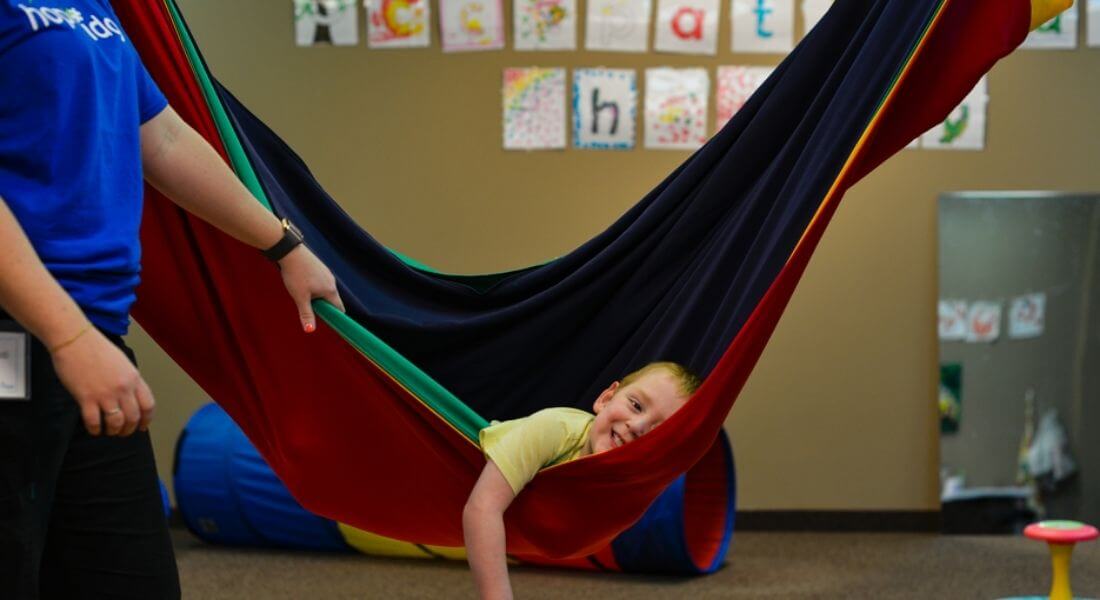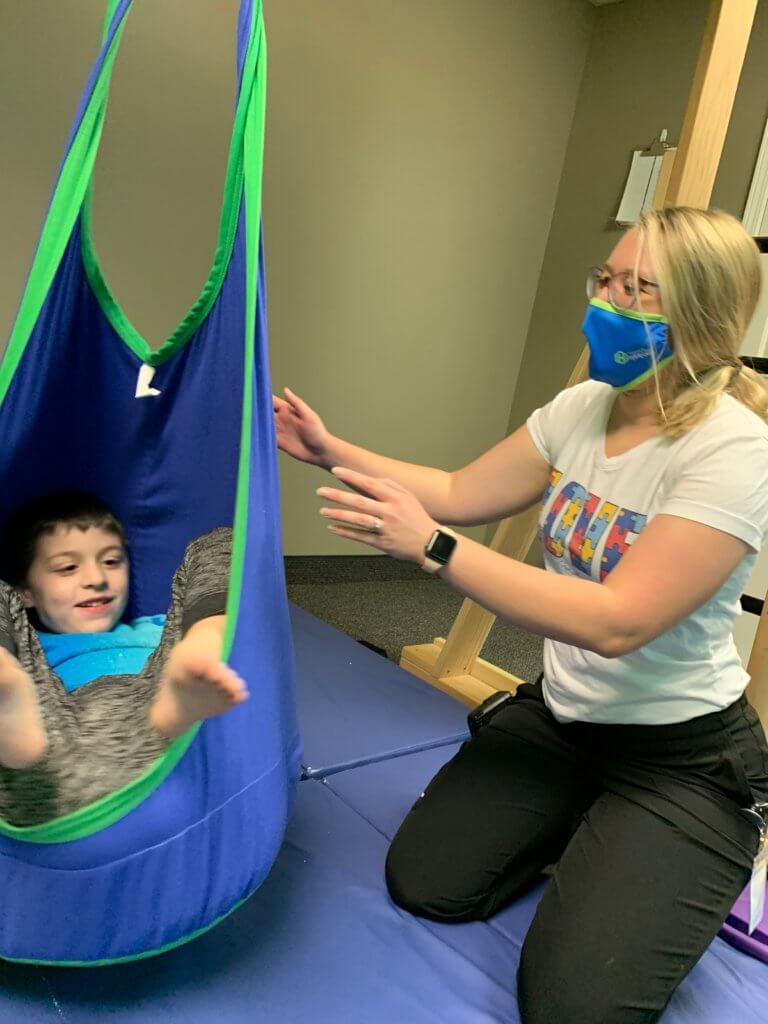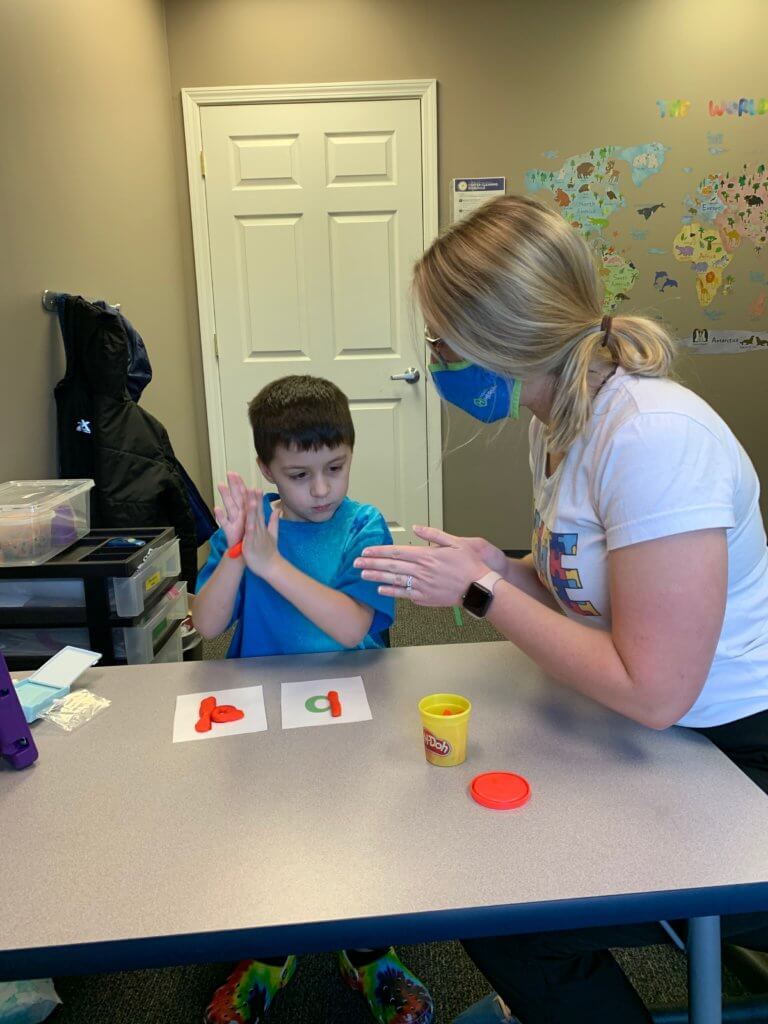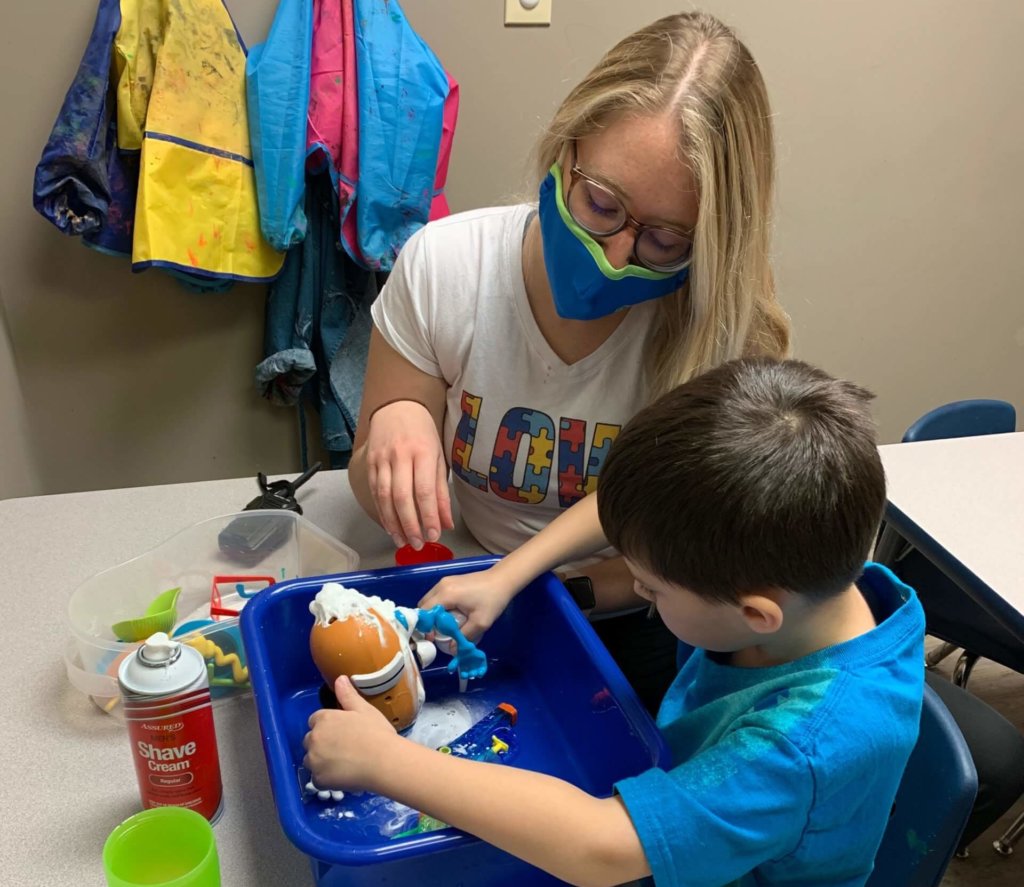Celebrating Occupational Therapy Month: A Look Inside Our Sessions
April 06, 2021
April 06, 2021

*This blog post uses identity-first language rather than person-first language to respect the overwhelming majority of autistic individuals and how they choose to be represented.*
Many parents, caregivers, and professionals working with autistic individuals are familiar with Autism Awareness & Acceptance Month in April. It is a time to celebrate the differences of neurodiverse people and advocate for acceptance. April also happens to be Occupational Therapy Month, offering a month-long celebration and opportunity to advocate for the best job in the world (although, I may be a tad biased!)

For those unfamiliar with occupational therapy (OT), it is a profession that helps people across the lifespan to do the things they want and need to do through the therapeutic use of occupations. Occupations are, simply put, the things we do every day. Occupational therapists can help people of all ages live better with all kinds of injuries, illnesses, or disabilities. Occupational therapists and our Certified Occupational Therapy Assistants (COTAS) offer a valuable perspective to the team members working with your child on the autism spectrum. We collaborate frequently with the BCBAs, speech therapists and others on the care team to promote independence and well-being for our clients. But, what do our sessions actually look like?
An OT session begins long before the child walks through our door. We start by teaming up with families, BCBAs and SLPs to learn about the specific needs of the child and how they currently perform their occupations. Occupations for these kiddos include learning to dress themselves, feed themselves well-balanced meals, perform school tasks like handwriting, and most importantly, play! A lot of autistic children and adults may struggle with performing these tasks independently and require extra support.
We’re looking for passionate, talented individuals to join our team. Come stand alongside Brenna to simultaneously teach and continue learning for kids with autism.
Let’s take tooth brushing for example. A parent may mention to the BCBA that their child is struggling with brushing their teeth, then the BCBA will consult with the OT to evaluate and design a treatment to help. An OT performs an activity analysis, where we watch your child perform the task and identify where they are struggling. We may notice your child is having a sensory reaction to the feel, taste, or even sound of brush strokes in their mouth that is limiting participation. Or maybe, they have fine motor challenges holding the brush with strong effective grasp and moving in a coordinated manner. Or they observe the child staring at the toothbrush in their hand, unsure of what step comes next, because they have cognitive challenges that keep them from sequencing the process of tooth brushing. An OT can help your child improve the specific sensory, motor, and cognitive aspects that any given task requires to become as independent as possible. The ultimate goal is to promote independence, which in turn promotes overall wellbeing, happiness, and confidence in themselves.

OTs know that the underlying skills mentioned in toothbrushing can have a broad application to other tasks as well. Many of our families are preparing for a school transition and ask therapists to help with school readiness. What does it mean to be “ready for school?” A child must be able to pay attention to lessons in a sensory-dense environment, use proper mechanics for operating their pencils, and respond to social aspects working with neurotypical or neurodiverse peers in the classroom. Just like in tooth brushing, there are sensory processing, motor coordination, and social-emotional or cognitive elements that impact their performance. OTs are very good at pinpointing exactly where the child needs their support and can design treatments or provide adaptations to promote success. We have years of clinical experience and schooling in fields of neuroscience, muscular and sensory patterns, and behavioral and cognitive psychology to be able to help your unique child in exactly the way they need.
Our job takes a lot of scientific knowledge and evidenced based practice, but our sessions are always based around play (which of course, is also rooted in evidence). Kids learn through play — learn how to work with others, use their hands to build things, explore new sensations, concentrate for long periods of time, and cope with emotional challenges. A session to outsiders may seem like we are just messing around, playing games and spending a lot of time on the floor covered in shaving cream. But the mind of an OT is always turned on and analyzing the activity demands, benefits, and challenges the child may be facing.

Play with shaving cream for example can be used to help sensitive kids learn to tolerate new feelings on their body. We can use a smear of shaving cream on a window to practice writing letters or drawing shapes, which also promotes shoulder strength and visual processing skills. I like using sponges or water toys to “give a bath” to shaving-cream-covered toys, which helps build up those tiny muscles in the hand for grasping, teaches how to use two hands together to accomplish a task, and helps to understand the sequence and rules of bathtime.
Play truly is the “work of childhood” and provides the most motivating way to practice the skills needed to be independent and successful in daily life. Some more of my favorite OT treatment activities include:
In summary, OTs work hard for your child to help promote all the skills needed in daily life. We may seem to be a silly, strange, or confusing profession because we address a lot of skills while really just seem to be playing around. My hope this Occupational Therapy month is that more families of autistic kiddos will understand how their OTs help their kids and become familiar with some of the things we address in our sessions. Ask any occupational therapist at Hopebridge and they will tell you that they LOVE working as a member of your child’s care team!
Brenna Farrar is an OTR/L working at the Middleburg Heights, Ohio Hopebridge location. She graduated with a bachelors in Neuroscience and Disability Studies from the Ohio State University, then earned her Master’s of Occupational Therapy from Cleveland State University in 2019. She has worked with autistic children ages birth to 21 for 2 years. She loves advocating for her clients, exploring the metroparks with her dog Mowgli, and planning her upcoming wedding!
If you want your child to have the freedom to be himself or herself, while also developing the skills that will help them create more meaningful relationships, Hopebridge can help. Through a program of interdisciplinary Hopebridge 360 Care services like ABA therapy, occupational therapy and speech therapy,* we can assist your kiddo in creating magical moments that will last in their memories – and their parents’ – for a lifetime. To start your child in a program that will help them build communication and social skills, fill out our quick and easy online form.
*Informed consent was obtained from the participants in this article. This information should not be captured and reused without express permission from Hopebridge, LLC. Testimonials are solicited as part of an open casting call process for testimonials from former client caregivers. Hopebridge does not permit clinical employees to solicit or use testimonials about therapeutic services received from current clients (Ethics Code for Behavior Analysts 5.07-5.08; BACB, 2020). Hopebridge does not provide any incentives, compensation, or renumeration for testimonials provided by a former client or client caregiver.
Team Spotlight
October 19, 2022
How to Grow a Career as a BCBA: Clinical Director Meg Moore Advances Field of ABA at Hopebridge
Team Spotlight
March 21, 2023
Hopebridge Team Builds Leadership Skills and Opportunities Through LEAD Program and Next Step Academy
Team Spotlight
June 26, 2020
Hopebridge’s Cami Gilman Bonds with Autism Families in the Center and through Teletherapy
Team Spotlight
July 25, 2022
Hopebridge Clinical Director Lives Out the Mission to Serve Others